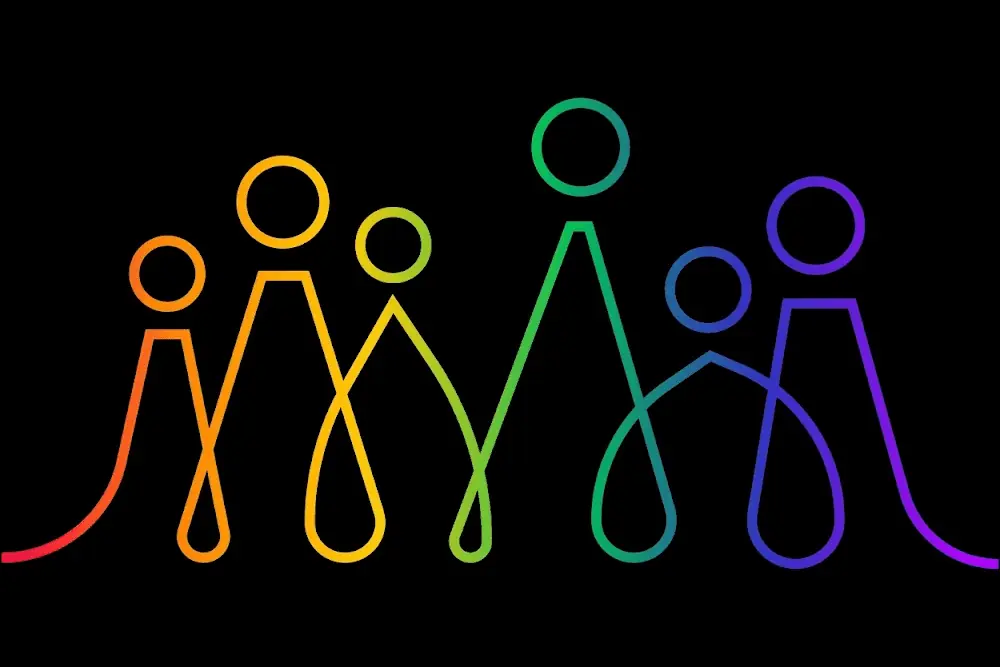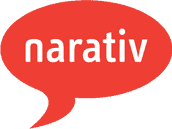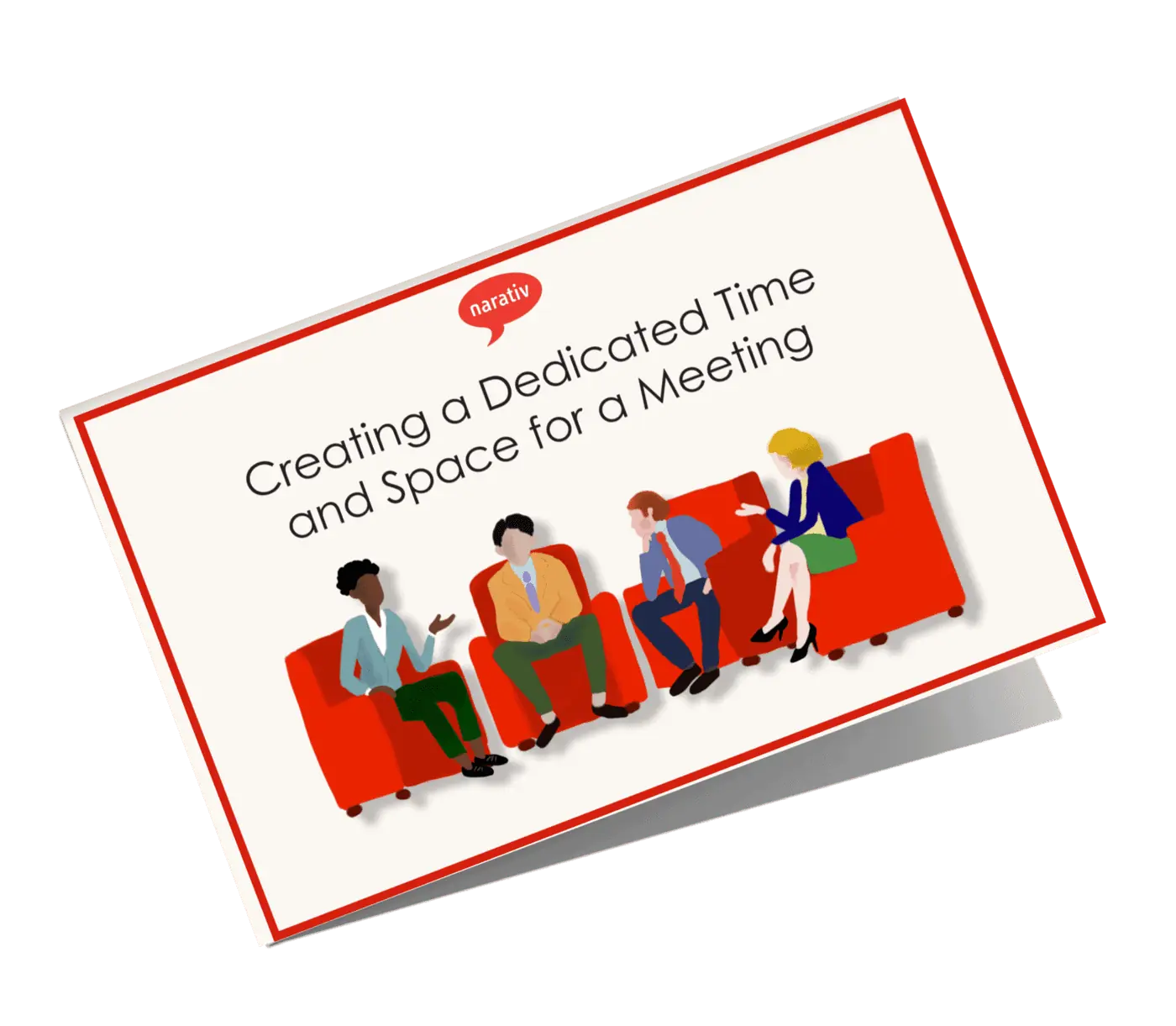Since 2020, there has been a massive rise in companies implementing initiatives to promote diversity, equity, and inclusion (DEI) within their organizations. On paper, this is fantastic news for the future of workplace diversity, but under the surface lurks an issue that may prevent these initiatives from bringing real change to the business world. Now that we’ve had a few years to work on it, it’s time we had a serious conversation about DEI and why we may need to start using storytelling for DEI change.

What is this issue lurking under the surface? We like to refer to it as the “checking the box syndrome,” aka, many businesses rushed to install DEI initiatives to comply with expectations from a changing world and these programs were never actually given the attention or resources required to truly integrate them into the fabric of the company. Essentially, many diversity initiatives ended up being a bandaid rather than a fundamental change to the DNA of a company.
So if the initiative alone isn’t enough to improve the state of DEI in a company, what is storytelling going to bring to the table that would make the difference?
More Than What Can Be Measured
Implementing changes based on measurable outcomes is a solid practice. Statistics on workforce demographics, diversity hiring, retention, promotion rates, and use of DEI resources can provide a helpful visual to demonstrate where the company might be lacking. However, using stats to help check a box doesn’t address the human element inherent to creating a more diversity-oriented workplace.
Cynthia Overton, Senior Director of Tech Workplace Initiatives at the Kapor Center in Oakland, California said, “Stories have the power to persuade and change. It’s easy for people to be presented with important statistics. But—in the absence of context, and the absence of a story—statistics are easy to forget. When you tell stories, stories bring situations, problems, challenges, victories, all of that to life.”
When storytelling for DEI change is introduced to the equation, every stage of a new diversity initiative comes to life. Stories can illustrate the impact of an effective DEI program before it is even implemented, but more importantly, they bring a corporate initiative down to the human level by breaking down prejudices and promoting understanding and community in a diversified workforce.
The Power of Peer-to-Peer Storytelling
“Show, don’t tell” is one of the first rules of filmmaking. Anyone who has ever sat through a diversity training meeting knows how awkward and forced it feels to listen to an HR rep try to explain why a diverse and equitable workplace is important. Imagine how much better it would feel to instead sit in a circle and have your entire workforce share genuine stories about their lives, experiences, and backgrounds in a way that helps everyone to better understand one another—and see how those varied perspectives and experiences combine to create a better workplace on the whole.
Everyone comes to a new workplace with a lifetime of experiences and a perspective shaped by the environment they grew up in. Everyone is the main character of their own story, and that often causes us to see anything our coworkers do that may bother us as an intentional slight. Combine that with the societal prejudices our upbringings may have instilled in us, as well as unconscious biases, and it becomes very easy for tensions to rise up in a newly diversified workplace.
The practice of storytelling is something that every workplace can benefit from, but it can prove especially beneficial on the heels of a new company DEI initiative.
So, how does storytelling for DEI change work and how do you start doing it in your workplace?
Create a Dedicated Time and Space for Storytelling
The best way to begin encouraging the sharing of stories in your workplace is to create a dedicated time and space where freely sharing stories is safe, natural, and encouraged. This can happen in a number of ways.
An easy way to prime the pump on the sharing of stories is to have leaders begin establishing the practice of telling personal stories in meetings before opening the floor for others to share stories of their own relevant experiences.
Other practices that may encourage story sharing can include round-robin question sessions in meetings, book clubs or other activities that encourage analysis and heavy discussion, and even dedicated storytelling town halls.
During these activities, encourage everyone to listen to the stories that come to the table with empathy and an open mind. This can be helped by leaders who are affirming of the experiences shared by each storyteller. That example can serve to set the tone for the entire group.
As this attitude of empathetic listening is cultivated and becomes the norm, it can create a safe and encouraging atmosphere in which to hold diversity-oriented storytelling sessions.
Develop Individual Diversity Stories
The sharing of individual diversity stories within a company can be an incredibly transformative and bonding experience. The development of each employee’s individual diversity story can be a direct assignment, but their stories can also be allowed to develop naturally simply by asking the right questions.
The best place to start building anyone’s diversity story is by asking about their heritage. Everyone has stories about where they grew up, where their ancestors are from, lessons they learned from their parents and grandparents, and family traditions that connect them to their heritage. These stories, even though they vary wildly from person to person, serve to connect us on a human level, and allow us to draw parallels between our own stories and the stories of others.
As the group becomes more open to connection through one another’s experiences, it can be beneficial to encourage your team to share personal experiences that shaped their lives or of personal hardships they’ve overcome. Prompt each speaker to use the “what happened method” of storytelling to present events as they happened and allow their listeners to step into their place as they listen to the story.
Sharing these stories in this way allows everyone in the group to put themselves in the shoes of every other member of their team, which serves to connect them at a level they may not have previously been capable of doing through simply working together. True diversity, equity, and inclusion are born from living one another’s experiences alongside each other and integrating that new understanding into how you work together.
Storytelling for DEI Change
The responsibility of implementing DEI initiatives that do more than just “check the box” takes time, effort, and thought, but if you can recognize and embrace the natural power of storytelling to connect people you’ll quickly realize it is possible to affect real change within the fabric of your company’s culture.
If you would like to learn more about how Narativ can help shape your company culture with storytelling for DEI change, visit us here.



